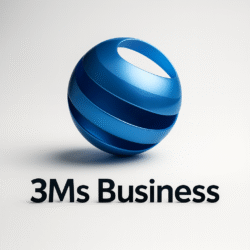Strategic Innovation: Thinking Beyond the Obvious
Introduction to Strategic Innovation
Organizational effectiveness and competitiveness experience significant advancement through strategic innovation which involves the development of new strategies and approaches. Business organizations today face an accelerated marketplace that makes traditional innovation methods ineffective. The changing nature of markets today forces companies to question standard operating procedures so they can discover unconventional solutions. The concept plays an essential role for business survival and success through exploiting new market possibilities.
Strategic innovation produces value by developing distinctive strategies which fulfill changing customer requirements while addressing marketplace voids. Organizational success depends on adopting creativity together with adaptability and foresight. Organizations must predict market trends while using new technologies to understand customer needs so they can build strategic approaches that create competitive advantages. Strategic innovation stands as an essential tool which helps businesses achieve long-term expansion and stay relevant in their market.
Strategic innovation stands as an essential element in organizational success. Organizations with innovative thinking capabilities perform better when addressing technological disruptions and behavioral changes in consumers as well as global market developments. These businesses maintain the flexibility to adjust their operational models whenever needed thus creating proactive instead of reactive strategies. Strategic thinking beyond obvious solutions creates opportunities for businesses to discover new products and services and operational processes which transform their market landscapes.
The understanding of strategic innovation represents a core requirement for organizations that wish to succeed in a changing business environment full of complexities. The following blog post will investigate strategic innovation through detailed examinations of its value and operational methods. The following sections will demonstrate how businesses can achieve new success paths through innovative strategy implementation.
Vision Alignment in Strategic Innovation
The core aspect of strategic innovation depends on vision alignment because it provides direction for all organizational efforts to maintain consistency with corporate objectives. Leaders must develop clear visions which determine innovation initiative paths while keeping them connected to organizational purposes and values. Alignment between teams enables productive strategies that promote teamwork and productivity across all departments.
Leaders must include their teams in the development process of innovation strategies to ensure the strategies truly reflect the organization’s vision. Leadership can establish clear communication channels and maintain open discussions and involve teams in important choices to achieve this goal. Employees who understand their role in achieving organizational targets develop both ownership and responsibility. When team members link their individual work to the company vision they gain increased motivation because they understand their contributions toward business success.
Organizations can achieve vision alignment through workshops which reinforce vision regularly while enabling team member feedback and using frameworks to monitor strategic innovation progress toward organizational goals. Teams can use the Balanced Scorecard framework as one tool to monitor how their innovations impact performance indicators that support company vision.
Leadership requires a continuous evaluation of the vision through market and organizational changes to ensure proper adaptation. Strategic innovation leaders should regularly evaluate the innovation landscape to guide their teams toward effective realignment thus maintaining innovative growth.
Competitive Positioning: Gaining the Upper Hand
Organizations must establish competitive positioning as their base for successful strategic innovation in today’s dynamic business environment. Companies need to recognize their market position in relation to competition while creating unique value propositions that appeal to customers. Organizations can analyze market dynamics and customer needs through analytical tools including Porter’s Five Forces and the Value Proposition Canvas.
Organizations use Porter’s Five Forces framework to evaluate competitive intensity within their industry through analysis of new market entry threats and supplier bargaining power and substitute product potential. This framework provides CEOs and leadership teams with insights about market competition which guides their strategic planning decisions. The Value Proposition Canvas enhances this framework by providing businesses with visual tools to demonstrate how their offerings solve specific requirements and difficulties that their target customers encounter.
Strategic positioning demonstrates its power through successful business examples that achieve strategic benefits. Through its expertise Apple built an exclusive brand image by uniting product design excellence with user-friendly interfaces and its interconnected ecosystem. Apple’s unique market position enables the company to hold onto its market segment while building loyal customer relationships through competitive analysis-driven innovation. The company demonstrates strategic adaptability by transitioning from DVD rental services to streaming content creation that enables it to lead the industry with individualized viewing features.
Organizational success through strategic innovation requires a multi-dimensional approach to competitive positioning. Analytical tools and established business models allow CEOs and their leadership teams to better understand market dynamics so they can develop distinctive value propositions while adjusting their competitive strategies. These strategic methods remain vital for businesses to handle contemporary commercial obstacles while building enduring growth.
Execution Roadmaps: Turning Ideas into Action
A successful execution roadmap stands as a fundamental requirement to transform innovative concepts into specific plans that propel organizational achievement. The execution roadmap functions as a strategic tool which shows the necessary steps that CEOs and founders together with their leadership teams must follow to execute innovative strategies with efficiency. A well-designed roadmap requires the first essential step to define precise timeframes. Organizations can maintain effective project monitoring through specific milestone definitions which also keep their initiatives on schedule. Timelines establish accountability standards that enable team members to work together toward shared targets.
Resource allocation stands as a fundamental element which determines the human, financial and technological resources needed to execute innovation. The proper distribution of resources enables teams to perform their tasks effectively while revealing potential execution phase deficits that should be resolved early. Performance metrics play an essential role when creating an execution roadmap. Organizations use metrics to assess their strategy performance so they can use data for making necessary adjustments. Leaders can evaluate innovation success through key performance indicators (KPIs) which provide quantitative measurements of their progress.
The execution roadmap needs to prioritize adaptability since innovation operates in a dynamic environment. Organizations need to adjust their plans because they must respond to emerging market conditions and new information. The flexibility to adapt enhances both success rates and team readiness to transition when unexpected problems emerge. We provide downloadable execution roadmap templates that help leaders structure their planning process. The resources section contains relevant links to authoritative articles alongside additional materials for enhancing understanding of execution best practices. Strategic planning through well-constructed execution roadmaps enables leadership teams to develop practical strategies that produce measurable outcomes.








